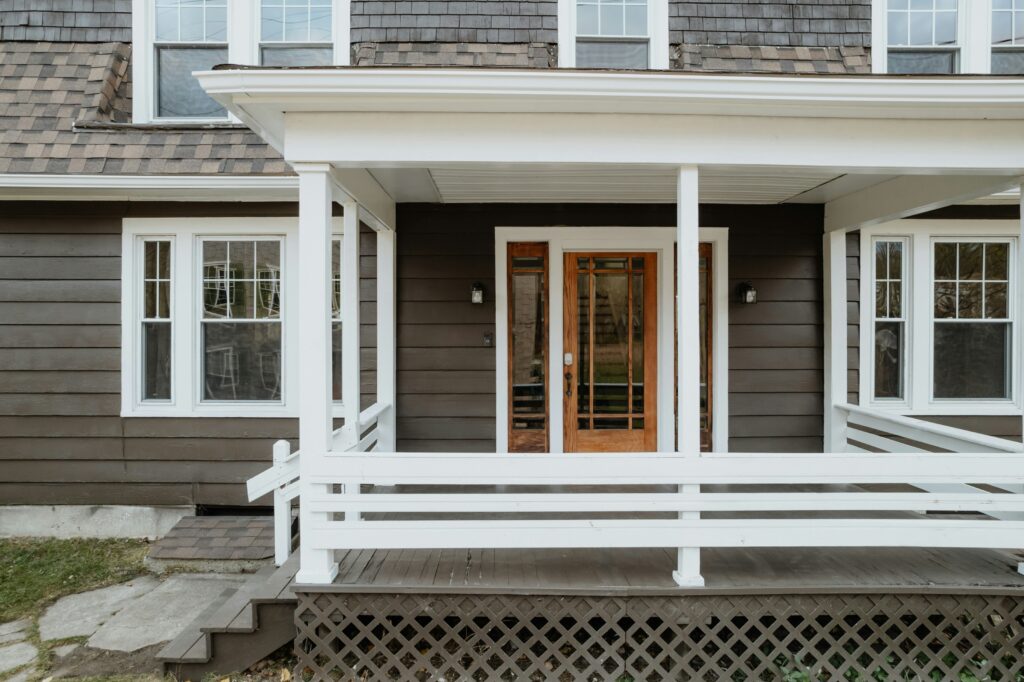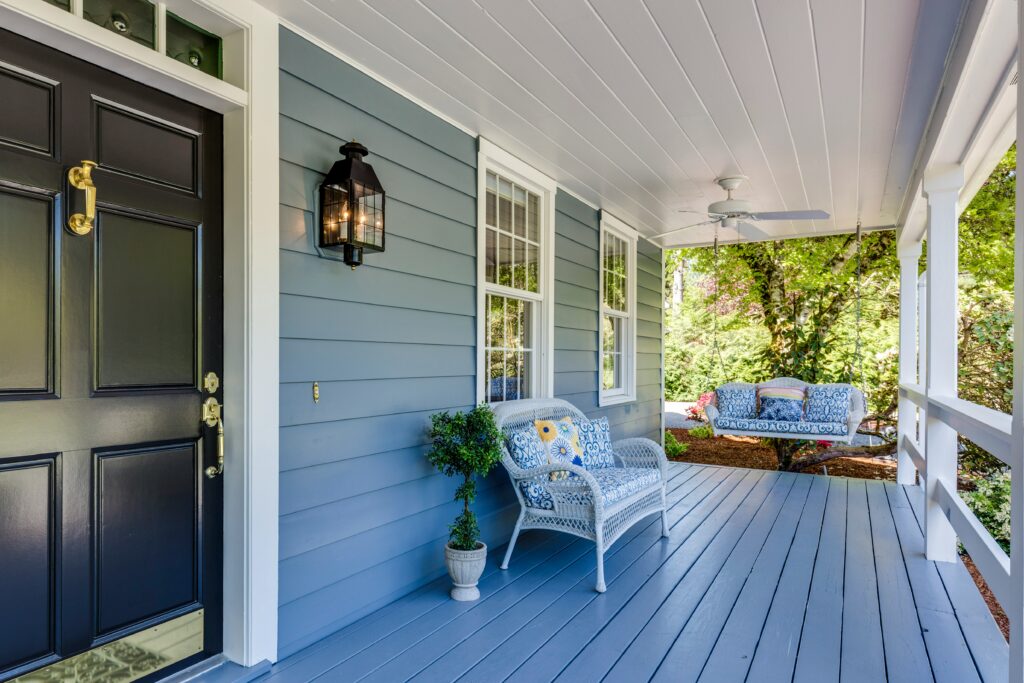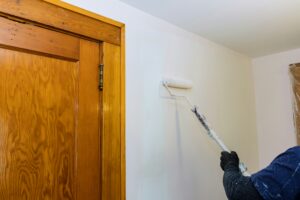Table of Contents
Introduction
When it comes to transforming your home, few elements have as much impact as paint. The right colour can brighten a space, add warmth, or make a bold statement. But beyond colour, there’s another critical choice that homeowners often overlook: Interior or Exterior Paint.
At first glance, paint might seem universal, but the formulation and performance differ depending on where it’s applied. Choosing the wrong type for your space can lead to peeling, cracking, or even costly repairs. Understanding the difference between interior and exterior paint is the first step to making a smart decision that balances aesthetics with durability.
In this guide, we’ll explore whether to use Interior or Exterior Paint in different rooms, provide practical paint selection tips, and share insights to help you get lasting results. Whether you’re updating a cosy living room or a sun-exposed veranda, this article will help you make the right choice for every space in your home.
👉 Ready for a professional finish? Discover our expert Residential Painters Brisbane team for flawless results.
Understanding the Basics of Interior and Exterior Paint
Interior Paint
Interior paint is designed for comfort, aesthetics, and easy cleaning. It contains resins that make it smooth to the touch, with a focus on low odour and resistance to scrubbing.
Key features include:
Low VOCs (volatile organic compounds) for healthier indoor air.
Washability for walls exposed to fingerprints or stains.
A finish range from matte to high gloss to suit different styles.
Exterior Paint
Exterior paint is built to withstand the elements. Rain, wind, UV rays, and temperature swings demand stronger formulas.
Key features include:
Durability against weather exposure.
Fade resistance to retain colour under harsh sunlight.
Mildew and mould inhibitors for damp conditions.
Understanding these distinctions makes it easier when choosing paint for rooms with unique needs.
The Difference Between Interior and Exterior Paint
It’s tempting to think all paints are interchangeable, but the difference between interior and exterior paint is significant.
Resins: Interior paints use rigid resins for smooth application, while exterior paints use softer resins to expand and contract with temperature changes.
Additives: Exterior paints include fungicides and UV blockers, while interior paints focus on low odour and stain resistance.
Durability: Interior paint excels indoors but may fail outdoors. Conversely, exterior paint indoors can release higher VOCs not intended for enclosed spaces.
This is why professional painters always match the paint type to the location—it’s about performance as much as appearance.

Interior or Exterior Paint: Room-by-Room Guide
Living Room & Bedrooms
For living spaces, aesthetics and comfort take priority. Interior paint is the clear winner here because it offers a wide range of finishes and is formulated for easy maintenance.
Best paint for home interiors: Satin or eggshell for living rooms, matte for bedrooms.
Avoid using exterior paint indoors due to stronger odours and unnecessary additives.
Kitchen
The kitchen is one of the busiest rooms in the house. Walls face splashes, grease, and steam.
Use interior semi-gloss paint for durability and wipe-clean convenience.
Prioritise moisture resistance in areas near sinks and stoves.
Bathroom
Moisture and humidity are major factors in bathrooms. Interior paints with mould-resistant additives are designed for this environment.
Interior or Exterior Paint? Always go with interior bathroom-specific formulations.
Exterior paint may resist mould, but it’s not formulated for ventilation-limited rooms.
Garage
This space sits in the grey area. A garage may be enclosed but still exposed to temperature changes and dust.
Choose a durable interior paint with exterior-grade additives if possible.
In some cases, exterior paint may be suitable for garage walls, but professional advice is recommended.
Outdoor Verandas & Decks
These areas are fully exposed to weather. Only exterior paint will provide the protection needed.
Look for UV resistance and waterproof features.
Pair with proper primers for best results.
Common Mistakes When Choosing Paint
Even with good intentions, homeowners often make missteps in paint selection tips.
Using exterior paint indoors – While durable, it can emit higher VOCs unsuitable for enclosed spaces.
Choosing interior paint outdoors – It will fade, crack, or peel under sunlight and moisture.
Ignoring finishes – Gloss levels affect not only aesthetics but also durability.
Skipping primer – Essential for both adhesion and longevity.
Best Paint for Home Interiors
Selecting the best paint for home interiors involves more than just colour. Consider the following:
Matte/Flat: Hides imperfections, ideal for low-traffic rooms.
Eggshell/Satin: Balanced durability and subtle sheen, perfect for living rooms.
Semi-Gloss: Best for kitchens and bathrooms due to moisture resistance.
High-Gloss: Rarely used on walls, but ideal for trim and doors.
Each finish complements different parts of your home, making the choice of Interior or Exterior Paint more nuanced.
When (and Why) to Use Exterior Paint Indoors
Though generally discouraged, there are rare situations where exterior paint indoors makes sense:
Basements with higher humidity.
Utility rooms with frequent exposure to moisture.
Garages where temperature fluctuations occur.
However, ventilation and safety should always be top of mind. Consult professionals before making this choice.

Practical Paint Selection Tips
When evaluating Interior or Exterior Paint, keep these paint selection tips in mind:
Match paint to the room’s conditions – High traffic = more durable finish.
Test samples – Lighting can drastically change colour perception.
Consider health factors – Always choose low-VOC interior paints for enclosed areas.
Budget wisely – Cheap paint often requires more coats and wears out faster.
Hire professionals – Skilled painters ensure proper application for lasting results.
The Role of Professional Painters
Even with the best paint, poor application can undermine your efforts. Professional painters bring:
Knowledge of which Interior or Exterior Paint suits specific spaces.
Tools and techniques for smooth, even finishes.
Experience with primers, sealants, and preparation.
👉 Learn more about our expert Residential Painters Brisbane services for a stress-free experience.
Linking Paint Choices to Long-Term Value
The paint you choose today affects your home’s value tomorrow. Quality finishes can:
Extend the time between repaints.
Enhance property value by improving aesthetics.
Reduce maintenance costs over time.
This is why investing in the right Interior or Exterior Paint is about more than looks—it’s a financial decision too.
Conclusion
The choice between Interior or Exterior Paint is more important than many homeowners realise. Interior paint prioritises comfort, aesthetics, and easy cleaning, while exterior paint focuses on resilience against weather. Mixing them up can lead to wasted time and money.
By considering the difference between interior and exterior paint, evaluating room conditions, and applying smart paint selection tips, you’ll ensure beautiful, durable results throughout your home.
For a flawless finish, trust the experts at Noble Painting. Explore our homepage for inspiration, browse Residential Painters Brisbane for tailored services, or Contact Us today to bring your vision to life.
FAQs
Q1: Can I use exterior paint indoors for better durability?
It’s possible in limited cases (like garages or basements), but it’s not recommended due to odour, VOC levels, and unnecessary additives.
Q2: What is the best paint for home interiors?
For most rooms, satin or eggshell interior paint works best. Semi-gloss is ideal for kitchens and bathrooms due to its moisture resistance.
Q3: How do I know if I should use Interior or Exterior Paint?
Think about location and conditions: enclosed rooms = interior paint, exposed areas = exterior paint. When in doubt, ask a professional.






